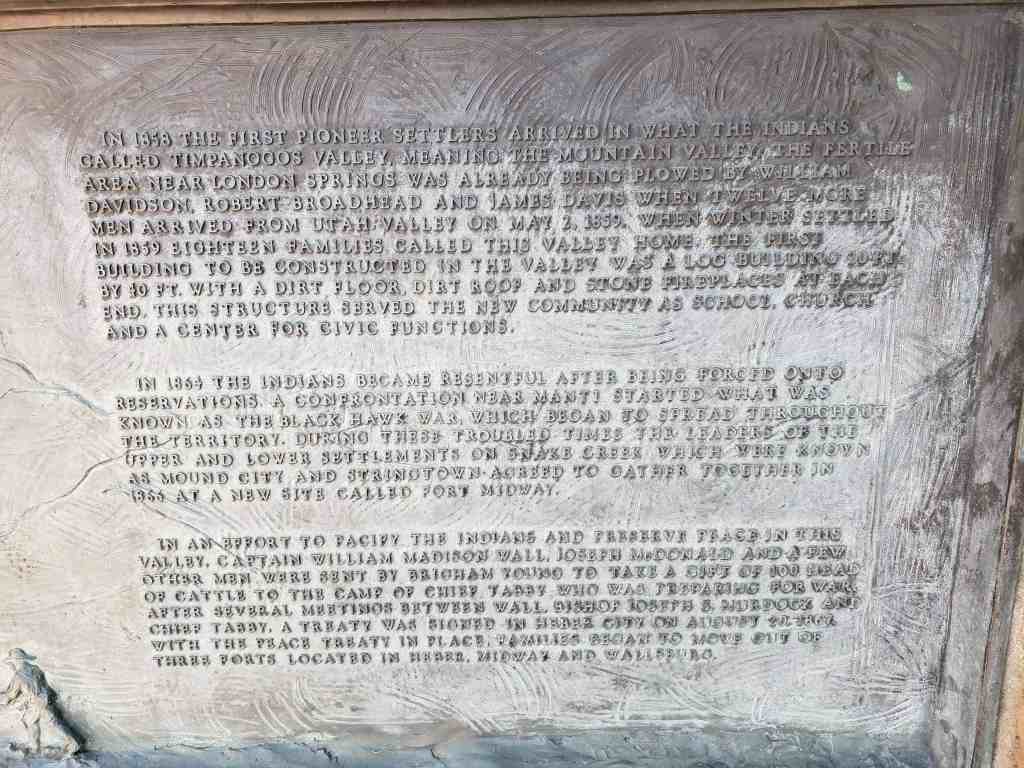In the corner of Main Street Park in Heber City, Utah – next to the “Journey’s End” statue is this monument with bronze plaques and histories.
In 1858 the first pioneer settlers arrived in what the Indians called Timpanogos Valley, meaning the mountain valley. The fertile area near London Springs was already being plowed by William Davidson, Robert Broadhead and James Davis when twelve more men arrived from Utah Valley on May 2, 1859. When winter settled in 1859 eighteen families called this valley home. The first building to be constructed in the valley was a log building 20 feet by 40 feet with a dirt floor, dirt roof and stone fireplaces at each end. This structure served the new community as school, church and a center for civic functions.
In 1864 the Indians became resentful after being forced onto reservations. A confrontation near Manti started what was known as the Black Hawk War, which began to spread throughout the territory. During these troubled times the leaders of the upper and lower settlements on Snake Creek which were known as Mound City and Stringtown agreed to gather together in 1866 at a new site called Fort Midway.
In an effort to pacify the Indians and preserve peace in this valley, Captain William Madison Wall, Joseph McDonald and a few other men were sent by Brigham Young to take a gift of 100 head of cattle to the camp of Chief Tabby who was preparing for war. After several meetings between Wall, Bishop Joseph S. Murdock and Chief Tabby, a treaty was signed in Heber City on August 20, 1867. With the peace treaty in place, families began to move out of three forts located in Heber, Midway and Wallsburg.
The origins of the early settlers were varied, many had arrived from the British Isles where they had been converted by Heber C. Kimball, counselor to President Brigham Young. When it came time for those in the location of this monument to name their settlement they chose “Heber” in honor of their leader. President Kimball is reported to have said: “Now you people have named your little town after me, I want you to see to it that you are honest, upright citizens… that I may not have cause to be ashamed of you.”
The tabernacle, located four blacks north of this site, is now the home of the Heber City offices. This building was built under the direction of the first Stake President Abram Hatch and was dedicated on May 5, 1889.
The railroad arrived in September of 1899 opening the valley to commerce between the settlers and the outside world. The train moved so slowly up the canyon that it became known as the “Heber Creeper,” at one time, more sheep were shipped out of Heber than from any other place west of the Mississippi.
Wasatch Centennial Committee: James Smedley, Florine Whiting, Kay Probst, Joe and Belle Weight, Ruby Hicken, Richard Buys, Fran Anderson, James Ritchie, Connie Tatton, Miranda Quealy, Peter and Lisa Fillerup.
August 10, 1996






